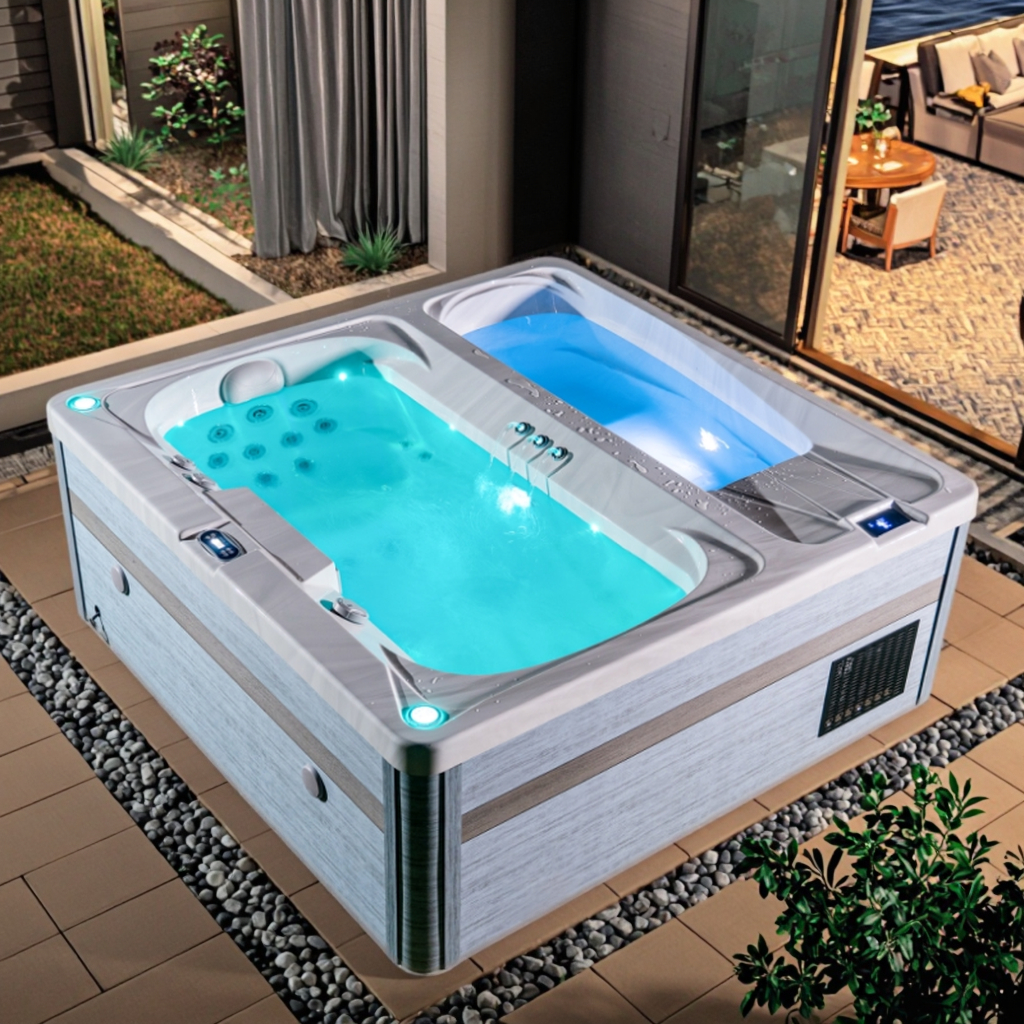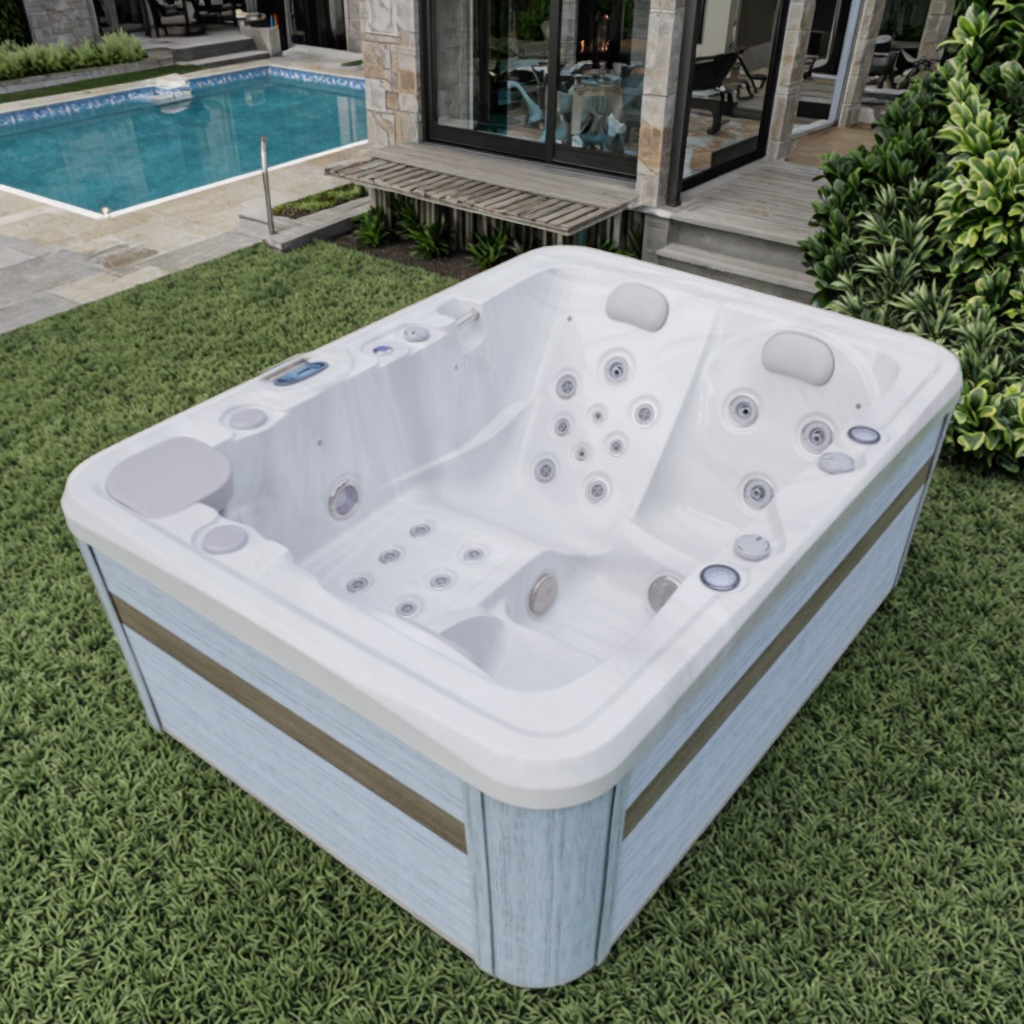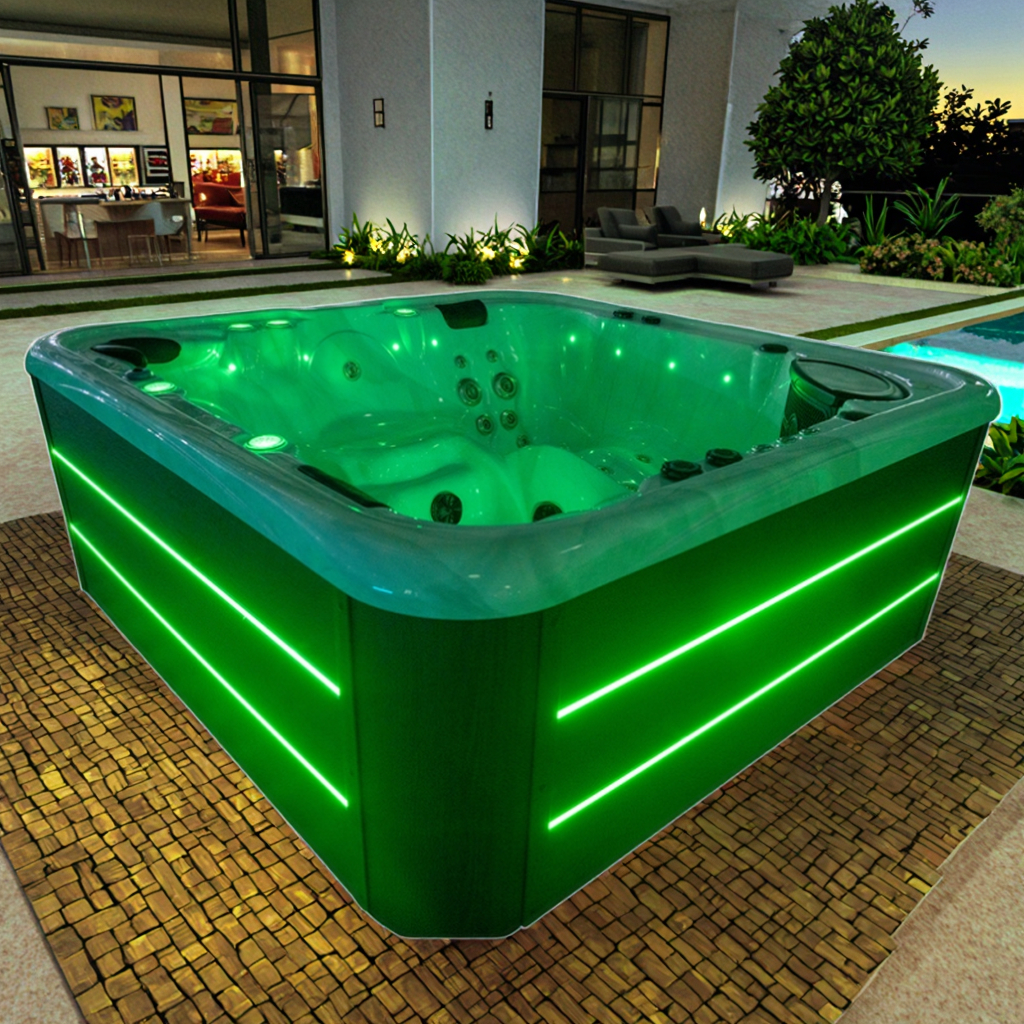
How often do acrylic spa hot tubs break?
2025-09-11 15:30Acrylic spa hot tubs have become a common comfort item in modern home wellness facilities. Combining multiple functions, such as massage, relaxation, cleansing, and therapy, they are highly sought after by homeowners. However, when purchasing or using one, many users are concerned: "How often will an acrylic spa hot tub break?" This question involves multiple factors, including material durability, structural strength, frequency of use, and maintenance. A systematic analysis is required to arrive at a professional and reliable answer.

What is an acrylic spa hot tub?
1. Definition of Acrylic Material
Acrylic (chemical name: polymethyl methacrylate, PMMA) is a transparent thermoplastic widely used in home furnishings for its lightweight, high gloss, and excellent weather resistance. An acrylic spa hot tub is a composite bathtub constructed with acrylic as the main surface material, reinforced with fiberglass and resin layers.
2. Structural Components of an Acrylic Spa Hot Tub
A standard acrylic spa hot tub consists of the following components:
· Acrylic surface: The outer shell that holds water and comes into contact with the body, typically 3-6 mm thick;
· Support layer (fiberglass and epoxy resin): Enhances rigidity and compressive strength;
· Bottom bracket: Typically a metal frame that supports the entire structure;
· Massage system and water circulation system: Includes jets, water pumps, heaters, piping, etc.
These components together contribute to the overall physical strength of the acrylic spa hot tub, directly impacting its lifespan and crack resistance.

Acrylic Spa Hot Tub: Definition and Types of Cracks
1. What is "crack"?
When using an acrylic spa hot tub, "crack" does not necessarily mean complete breakage or extensive shattering. Based on the bathtub's structure, cracks are primarily categorized as follows:
· Surface cracking: Visible cracks appear on the acrylic surface;
· Structural fracture: Deformation caused by a break in the bottom frame or fiber layer;
· Perforation damage: A leaking hole appears in a certain area of the bathtub;
· Stress cracking: Microscopic cracks caused by long-term thermal expansion and contraction or point pressure.
All of these conditions are considered "cracks," and in severe cases, replacement of components or even the entire bathtub may be necessary.
What factors influence the frequency of acrylic spa hot tub cracks?
To accurately answer the question "How often does an acrylic hot tub crack?", a detailed analysis of the factors that cause it to crack is essential:
1. Material Strength and Thickness
Acrylic is inherently tough and moderately flexible, but its performance fluctuates depending on the following factors:
· Panel Thickness: 3mm thick acrylic has lower compressive strength than 6mm thick acrylic.
· Material Grade: High-quality acrylic offers far superior heat and impact resistance than cheaper panels.
· UV Stabilizer: Determines aging resistance and prevents sun cracking.
· Quality of the Fiberglass Reinforcement: Directly impacts the tub's structural support.
Conclusion: Material quality is the key factor determining the likelihood of an acrylic hot tub cracking.
2. Frequency of Use and Weight Load
· Daily Use: High-frequency use (e.g., two to three times a day) accelerates fatigue.
· Number of Occupants: Exceeding the designed occupancy increases the load, making the bottom susceptible to deformation and cracking.
· Age: After prolonged use, the composite layer may experience structural fatigue.
· Water Temperature Fluctuations: Frequent transitions between high and normal temperatures accelerate cracking caused by thermal expansion and contraction.
According to statistics, acrylic spa hot tubs frequently subjected to pressure are more likely to suffer structural damage within 5-8 years.
3. Standard Installation Methods
· Is the foundation level?: An uneven foundation can cause uneven stress distribution, increasing the risk of cracking.
· Is a shock-absorbing pad installed?: This helps cushion the impact between the tub and the hard surface.
· Allow space for pipes: If the jet system or inlet and outlet pipes are too tight, thermal expansion and contraction can easily cause stress concentration at the joints, ultimately leading to cracking.
Conclusion: Professional installation significantly extends the life of an acrylic spa hot tub.
4. Cleaning and Maintenance Methods
· Are corrosive cleaning agents used?: Strong acids and bleach can damage the acrylic surface.
· Is the system regularly drained and cleaned?: Sediment can clog the jet system, and abnormal water pressure can damage the tub.
· Is the system dry-burned?: Dry-burning can cause the acrylic surface layer to separate from the fiber reinforcement, leading to blistering, cracking, and other problems.
Good cleaning habits can effectively extend the life of an acrylic spa hot tub.

Acrylic Spa Hot Tubs of Different Grades: Lifespan Comparison
Material Grades | Service Life | Common rupture cycles | Recommended Inspection Frequency |
| High-end composite acrylic | 10-15 years | About 10 years | Annual Inspection |
| Mid-range laminated acrylic | 6-10 years | 6-8 years | Twice a Year |
| Low-end thin-layer acrylic | 3-5 years | 3-4 years | Semi-Annual Inspection |
✔ Conclusion: Material selection determines lifespan. High-end acrylic spa hot tubs are typically crack-resistant for 10 years, while low-end tubs may crack within 3 years.
Acrylic Spa Hot Tubs: Warning Signs of Cracks and Solutions
1. Common Signs of Cracks
· A slight "cracking" sound;
· White cracks or discoloration on the surface;
· Abnormal temperature in a specific area;
· Uneven water flow or leaks from the jets.
If any of these problems are observed, it is recommended to stop use immediately to prevent further damage.
2. How to Fix a Cracked Acrylic Spa Hot Tub?
· Minor Cracks: Repair with acrylic patching glue, fiberglass cloth, and polymer coating.
· Cracks around the nozzle: Replace the nozzle and re-reinforce the joint area.
· Cracks on the bottom: Reinstall the support layer or replace the entire tub.
· Large Cracks: In most cases, it is recommended to replace the entire acrylic spa hot tub.

How to Extend the Lifespan of an Acrylic Spa Hot Tub?
1. Choose high-quality acrylic materials and reputable brands;
2. Perform a comprehensive overhaul once or twice a year;
3. Control the operating temperature to no higher than 42°C;
4. Avoid standing on, jumping, or other improper operation;
5. Clean the showerhead and piping system regularly;
6. Do not use hard objects or metal brushes for cleaning;
7. Use a level foundation and flexible support structures during installation.
These details can help delay the breakage of an acrylic spa hot tub.
How often do acrylic spa hot tubs break?
Based on factors such as material properties, frequency of use, installation conditions, and maintenance methods, the following conclusions apply:
1. Under standard operating conditions, high-quality acrylic spa hot tubs generally will not experience structural failure within 10 years;
2. Mid-range products may develop cracks or structural fatigue after 5 to 8 years;
3. If improperly installed or used, low-end tubs may break after 3 to 5 years;
4. Proper maintenance and repair can delay breakage by at least 3 to 5 years.
✅ In summary, acrylic spa hot tubs don't "break naturally" within a fixed period of time. Their durability is highly dependent on the quality of the materials selected, usage habits, and maintenance practices. With proper use and professional installation, most home users can enjoy 8-12 years of reliable use without worrying about major structural damage.
How does your company handle quality control?
Each spa goes through a multi-stage inspection process, including electrical testing, water pressure checks, acrylic inspection, and final run simulation. Our team follows ISO9001-certified procedures and maintains a dedicated QA department. We photograph and video-test every unit before packing, so you can buy with confidence from a high-quality spa manufacturer.
